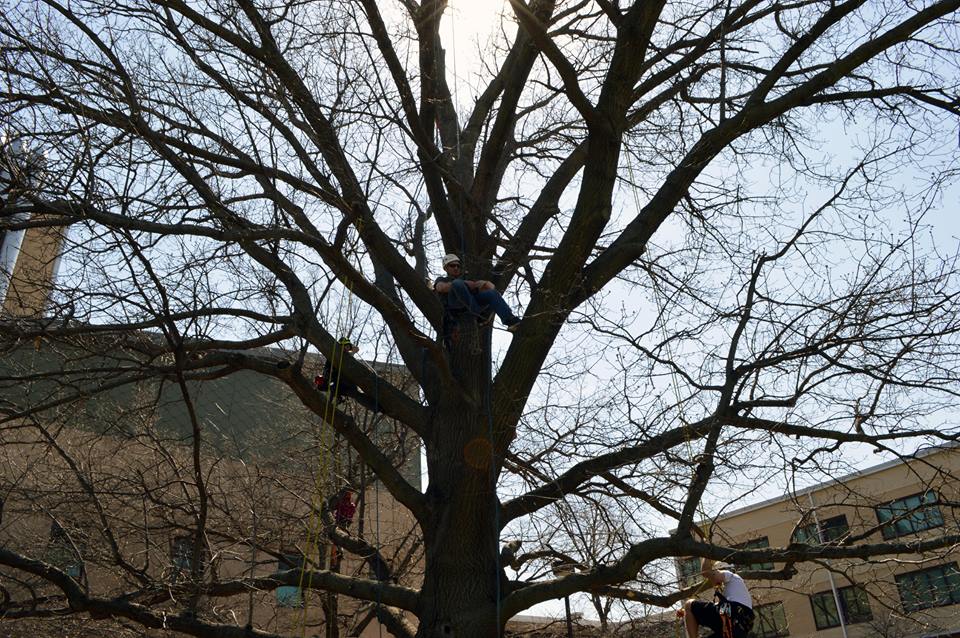
Students in the School of Natural Resources partnered up with those from South Dakota State University for a tree climbing exercise during the spring 2018 semester. Students and recent graduates from SDSU helped teach those in the arboriculture class at SNR how to safely climb trees using a variety of climbing methods. The class is part of a new major in urban forestry being developed by Eric North, assistant professor of practice at SNR.
That tree-climbing exercise recently was featured in the Arboricultural Research and Education Academy newsletter. We're highlighting it here because of its value in helping us grow a degree that rounds out what SNR offers to the state and country through its students.
An excerpt of "Arboriculture is a Culture of Community and Safety," by Eric North
In January of this year, I was invited by Dr. John Ball to speak at a South Dakota Arborist Association Conference. During the lunch break, Dr. Ball inquired how the new program development was coming along. I provided a review of the course and curriculum development, and mentioned I was teaching a lecture and field-based course in arboriculture during the current spring semester. John looked at me and, with his characteristic booming voice, offered to bring his arboriculture students to help instruct my students in arboricultural climbing. We arranged a date at the end of April to have the two university classes work together on proper, safe climbing techniques.
At the end of April, John and 10 of his current students along with two former students, who are now professional climbing arborists, made the four-hour trip to Lincoln, Nebraska, to work with my students. We started the morning in the classroom going over the ANSI safety standards and basic climbing gear. Beginning in the afternoon John and his students worked to set up the climbing lines in three trees. With safety gear on and job briefing complete, the students took to the trees. The weather was perfect and the effect of being in the trees at the end of a long, cold semester was a reminder of why more and more people find arboriculture to be such a satisfying profession. The field session was three hours long, usually enough time for students to lose focus, but not on that day. Students from both universities could have kept working and climbing together. John, of course, enthusiastically encouraged and cajoled students to push themselves. It was a successful class. ...
At forestry conferences, arborists and urban forestry professionals are increasingly seeking out ways to collaborate in meaning ways to help build, support, and grow the industry safely and ethically. I, for one, am thankful to all who have arboriculture truly fosters a culture of community and safety.
See photos from the event here.